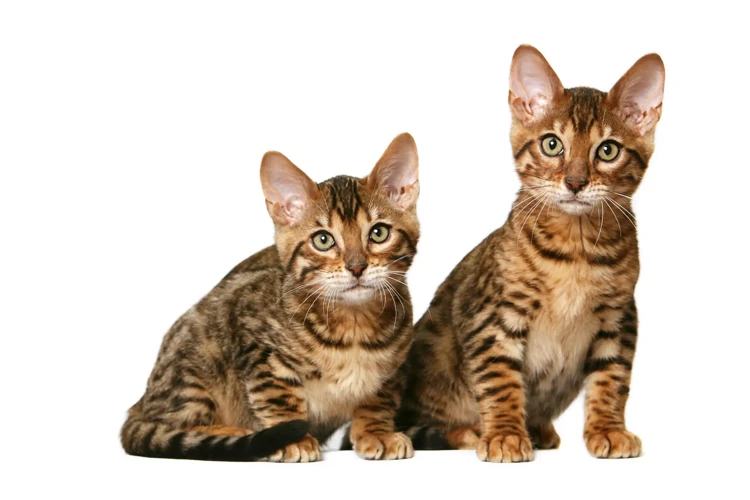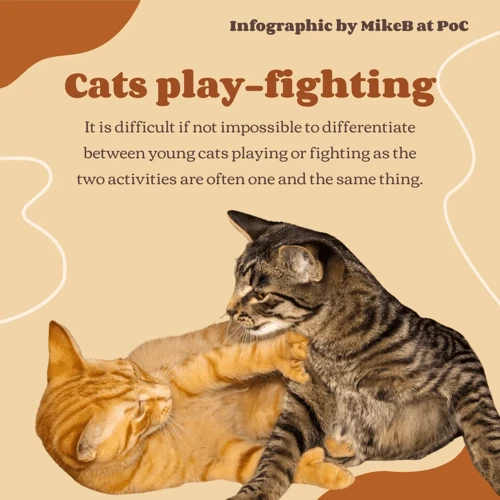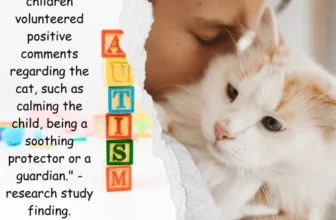Are you a proud owner of a California Spangled cat who has been experiencing aggression lately? It can be distressing to see your sweet feline turn into an aggressive creature without any apparent reason. However, it is important to understand that aggression is a common problem in many cat breeds, including the California Spangled cats. In this article, we will explore what California Spangled cat aggression is, what causes it, and most importantly, we will provide you with tips and tricks to deal with it effectively. So, buckle up and read on to discover how you can help your furry friend become a happy and well-behaved pet!
What is California Spangled cat aggression?
California Spangled cat aggression refers to any behavior that is intended to harm other animals or humans. It is a problem behavior that could arise at any point in time. Cats are known to be solitary animals, but this does not mean they cannot exhibit aggression. California Spangled cats are no exception when it comes to demonstrating aggressive behavior.
These beautiful cats are known to be curious, playful, and active. However, they can also become aggressive under certain circumstances. Understanding the reasons behind their aggression is essential to address the problem and prevent future aggression.
Aggression in California Spangled cats can take many forms, including vocalization, hissing, growling, biting, and scratching. Some California Spangled cats might show aggression only towards other cats, while others might show aggression towards people. The cause of the aggression can vary from cat to cat, and it’s essential to identify the reason for the behavior before trying to address the problem.
It is important to note that not all aggression is bad. Cats are natural predators, and their aggression helps them hunt and protect their territory. However, sometimes their aggression becomes excessive and problematic, and it is up to the owner to intervene and correct the behavior.
If you are a California Spangled cat owner and you are concerned about your cat’s aggressive behavior, continue reading to learn about the causes of aggression, signs to look for, and ways to correct the behavior. You will also learn about effective ways to prevent future aggression and ensure your cat’s health and well-being.
Anchor text: If you want to learn more about California Spangled cat’s territorial behavior, follow this link to read our guide on California Spangled cat territorial behavior.
Why do California Spangled cats become aggressive?
California Spangled cats can become aggressive for various reasons. One reason might be related to their physical health, such as chronic pain or an underlying medical condition that is triggering the aggressive behavior. If you notice aggressive behavior in your California Spangled cat, it’s important to visit a veterinarian to rule out any health issues.
Another reason why California Spangled cats might become aggressive is related to a lack of socialization. If they didn’t receive adequate socialization during their early years, they might not know how to interact with other cats, humans, or animals. This can trigger aggressive behavior as they become fearful or feel threatened. Ensuring your California Spangled cat is socialized from a young age can help prevent future aggressive behavior.
Territorial issues can also contribute to aggression in California Spangled cats. Cats are naturally territorial, and if their territory is invaded by other cats or animals, they might become aggressive to defend their space. Providing enough space and territory for your California Spangled cat can help prevent territorial aggression.
Lastly, it’s essential to keep in mind that some aggression in California Spangled cats might result from environmental factors, such as high-stress levels or a lack of environmental enrichment. California Spangled cats are known for their high energy levels and need for physical activity, and if they don’t have enough exercise or climbing space, it can lead to aggressive behavior. Providing enough exercise, playtime, and climbing space for your California Spangled cat can help prevent destructive behavior.
If you suspect that there is an underlying problem causing your California Spangled cat’s aggressive behavior, visit a veterinarian or seek professional guidance. Several tips and tricks can help you deal with aggression in California Spangled cats, and by following these tips and tricks, you can prevent future aggression. For more information, check out our guide on California Spangled cat traits and their behavior.
Identifying Aggressive Behavior

It’s important to be able to identify when your California Spangled cat is exhibiting aggressive behavior. This can be especially crucial in preventing the behavior from escalating into destructive or dangerous behavior. Some signs of aggressiveness in cats include hissing, growling, biting, scratching, and seemingly unprovoked attacks. If you notice these behaviors in your California Spangled cat, it is important to take action to address the problem.
There are also different types of aggression that your cat may display: territorial aggression, redirected aggression, fear aggression, and play aggression. Territorial aggression is shown when a cat is protective of its territory and may attack anyone who enters it. Redirected aggression occurs when a cat is agitated by something but cannot attack the source of the agitation, so it takes it out on another target. Fear aggression is displayed when a cat is afraid and lashes out to defend itself. Play aggression is when a cat displays aggressive behavior while playing, but doesn’t intend to harm anyone.
It’s important to note that aggression in California Spangled cats can be caused by a number of factors and identifying the root cause of the behavior is crucial in addressing the issue. If your cat is exhibiting aggressive behavior, it may be due to a physical health issue, a lack of socialization, or territorial issues.
If you suspect your cat’s aggression is due to a physical health issue, it’s important to schedule an appointment with your veterinarian. Additionally, if your cat is not socialized properly, it may become aggressive towards humans and other pets. Providing enough climbing space, toys, and attention can help in preventing play-aggressive behavior. Providing your cat with plenty of playtime and environmental enrichment can also help in curbing aggressive behavior.
Handling an aggressive California Spangled cat can be challenging and dangerous, so it is important to seek professional guidance if you are unable to resolve the issue on your own. There are many resources available such as veterinarians, animal behaviorists, and trainers who can help.
Understanding the signs and types of aggression in California Spangled cats is important in properly addressing the issue and preventing future aggressive behavior. Providing proper environmental enrichment, socialization, and seeking professional help when necessary can lead to a happy and healthy cat.
Signs of aggression in California Spangled cats
California Spangled cats are naturally playful and friendly, but they can show signs of aggression if they feel threatened or frightened. These signs can vary from subtle to obvious and can include both physical and behavioral clues. One of the most noticeable signs of aggression in California Spangled cats is growling or hissing. This indicates that the cat feels threatened or is preparing to attack. Tail twitching, flattened ears, and dilated pupils are also common signs of an aggressive California Spangled cat.
Another sign of aggression is biting or scratching. Sometimes, a California Spangled cat may be playing roughly and accidentally scratches or bites, but if the behavior occurs frequently and with little warning, it is likely a sign of aggression. Additionally, if your cat is destroying household items or furniture, it may be a sign of destructive behavior that can stem from aggression.
It is also essential to pay attention to the body language of your California Spangled cat. If your cat arches its back, fluffs its fur, or crouches down, it might be getting ready to pounce or attack. Additionally, if your California Spangled cat vocalizes aggressively by growling, hissing, or yowling, it is usually best to back off and give it space.
If you notice any of these signs of aggression in your California Spangled cat, it’s important to address the behavior promptly. The first step is to identify the root cause of the behavior: whether it’s due to physical health issues, lack of socialization, or territorial issues. Once you understand the underlying cause of your cat’s aggression, you can start putting in place strategies to manage the behavior and prevent future outbursts.
To learn more about what causes aggressive behavior in California Spangled cats, check out our guide on destructive behavior and environmental enrichment.
Types of aggression in California Spangled cats
Aggressive behavior in California Spangled cats can manifest in different types. Fear aggression is a common type of aggression in California Spangled cats, usually triggered by situations such as vet visits or the presence of unfamiliar people or animals. California Spangled cats may hiss, growl, or flee in these situations. Another type of aggression in California Spangled cats is territorial aggression. This is when a California Spangled cat feels a need to protect its territory or resources. These cats may become aggressive towards other cats or people who come too close to their food, water, or litter box.
Another type of aggression in California Spangled cats is play aggression. Kittens and young California Spangled cats may use playtime to practice hunting and fighting skills. While this behavior is normal, it can be dangerous when directed towards humans. People can get injured when a California Spangled cat bites or scratches them. Redirecting this behavior towards toys or providing climbing space for your cat can help alleviate this type of aggression.
Lastly, redirected aggression can occur when a California Spangled cat is unable to physically attack the object of their aggression. They may then turn their aggression towards another person or animal that is in close proximity. This can happen when a California Spangled cat looks out the window and sees another cat. Frustrated, the cat may turn around and attack their owner or another cat in the household.
Understanding the different types of aggression in California Spangled cats is important for identifying and addressing the underlying causes. If you think your California Spangled cat is exhibiting signs of aggression, you may want to read more about California Spangled cat health and behavior to better understand their needs.
Causes of Aggression in California Spangled Cats

California Spangled cats are generally friendly and affectionate, but they can sometimes exhibit aggressive behavior. Understanding the causes of this aggression may help in finding solutions and preventing future occurrences.
Physical health issues: One of the reasons why California Spangled cats show aggressive behavior can be attributed to underlying medical conditions. If your cat is in pain, they may lash out when you attempt to touch them or move them. It is crucial to take your feline friend to the vet for regular checkups and to address any health problems promptly.
Lack of socialization: California Spangled cats that were not socialized at a young age may react aggressively when exposed to new situations or experiences. To prevent this, it is important to socialize your kittens from an early age. You can also help your adult cat become more comfortable by introducing new experiences gradually.
Territorial issues: California Spangled cats are territorial by nature and can display aggressive behavior if they feel their territory is threatened. If household changes occur such as the introduction of a new pet or a move to a new home, your cat may become anxious or territorial. Providing enough space and climbing opportunities for California Spangled cats can help with territorial issues.
Understanding the root causes of your California Spangled cat’s aggression is crucial to address the problem. If you suspect your cat’s aggression is due to a medical issue, consult with your veterinarian to get appropriate treatment. Socialize your cat early on and provide them with enough space and exercise to avoid territorial issues. For more tips on providing climbing opportunities and creating an enriching environment for California Spangled cats, see our article on climbing spaces.
Physical health issues
It’s essential to understand that aggression in California Spangled cats could be linked to physical health issues. Every cat has its way of expressing pain or discomfort, and some cats tend to become aggressive if they feel unwell.
One of the common physical health issues that can cause aggression in California Spangled cats is dental problems. When your cat has dental pain or tooth infection, they may become irritable and aggressive, particularly if you touch their mouth. If you notice your cat avoiding food or having trouble chewing, take them to a vet to check for dental problems.
Another physical health issue that can cause aggression is urinary tract infections (UTIs). UTIs can cause your cat to experience discomfort while urinating, leading to aggressive behavior and excessive grooming. If you notice your cat meowing loudly while using the litter box or licking the genital area repeatedly, it’s time to visit a vet.
Hyperthyroidism is another physical health issue that can cause aggression in California Spangled cats. This condition occurs when the thyroid gland produces too much thyroid hormone, causing an increase in the cat’s metabolic rate. As a result, your cat may become aggressive, anxious, and restless. If you notice a sudden increase in your cat’s appetite, weight loss, and aggressive behavior, take them to a vet to rule out hyperthyroidism.
If you notice any changes in your cat’s behavior, it’s essential to take them to a vet to check for any underlying physical health issues. Your vet can diagnose and treat any condition that may be causing your cat’s aggression.
Finally, remember that cats cannot communicate their discomfort or pain in the same way humans do. The aggressive behavior may be their only way of expressing their pain, so it’s essential to be as observant as possible and seek professional guidance if necessary. Don’t forget to check our article on California Spangled Cats and Children to know how to ensure safe and healthy interaction between your cat and your child.
Lack of socialization
One of the main reasons why California Spangled cats may display aggressive behavior is due to a lack of socialization. Socialization is a critical aspect of a cat’s development and involves exposing them to different people, environments, and experiences from a young age.
When a California Spangled cat is not socialized properly, they may develop fear or mistrust towards humans and other animals, leading to aggressive behavior as a form of defense. This lack of socialization can also result in a reduced tolerance for handling and physical contact, which can escalate into aggression if the cat feels threatened or cornered.
To address this issue, it is crucial to provide your California Spangled cat with adequate socialization from an early age. This could include introducing them to different people, environments, and experiences regularly. It is also important to create a safe and positive environment that helps build trust and positive associations for your cat.
Socialization doesn’t just occur in the early stages of your cat’s life, but rather an ongoing process throughout their lifespan. This means that providing constant exposure to new experiences and environments can continue to strengthen their socialization and reduce the likelihood of aggressive behavior.
If you acquire a California Spangled cat that has not been properly socialized, seeking the help of a professional cat behaviorist may be necessary. A behaviorist can design a customized socialization and training program to help your cat overcome their aggressive tendencies and develop positive social behaviors.
Territorial issues
Cats, particularly California Spangled cats, are territorial animals by nature. They tend to become aggressive when they feel that their personal space is being invaded or threatened. This territorial aggression can be seen in various situations, such as when there are other cats in the household, when new people or animals are introduced or when changes occur in their environment.
Marking Territory: One of the most common territorial issues seen in California Spangled cats is marking territory. This behavior is displayed when a cat sprays urine in specific locations to mark its territory. This can be very frustrating for cat owners, as the smell is unpleasant and cleaning it up can be a hassle. Cats may use marking as a way to feel more secure or to communicate with other cats in the household.
Resource Guarding: California Spangled cats may also display territorial aggression by guarding resources such as food, toys or sleeping areas. Resource guarding can result in aggressive behavior towards other cats or humans who attempt to approach the guarded object or resource.
Aggression Towards Other Cats: Territorial aggression can also manifest in the form of aggression towards other cats. California Spangled cats may feel the need to protect their personal space and territory from other felines. This can result in hissing, growling, and physical attacks towards other cats in the household.
To deal with territorial aggression in California Spangled cats, understanding the root cause of the aggression is key. Providing enough space for each cat in the household can help reduce territorial conflicts. Additionally, it’s important to ensure that each cat has his or her own resources, such as food bowls, water dishes, and toys, to prevent resource guarding.
Socialization is also important, as it can help prevent territorial aggression towards other cats. Early socialization is key, and introducing kittens to other cats in a supervised and controlled environment can help them learn appropriate social behavior.
Seeking the advice of a professional, such as a veterinarian or a cat behaviorist, may also be helpful in dealing with territorial aggression in California Spangled cats. They can provide insight and guidance on how to modify your cat’s behavior and reduce aggressive tendencies.
Tips and Tricks for Dealing with Aggression in California Spangled Cats

When it comes to dealing with aggression in California Spangled cats, there are various tips and tricks that can make the process much easier. Here are some of the most effective strategies for managing aggression in your feline friend:
Provide enough space and exercise
One of the most common causes of aggression in cats is not having enough space to play and exercise. Ensure your California Spangled cat has enough space to move around freely and explore. Encourage playtime every day through interactive toys and regular exercise, such as walks outside or indoor play sessions. A well-exercised cat is a happy cat.
Train your cat
Training your California Spangled cat using positive reinforcement methods can help prevent aggressive behavior. Positive reinforcement training helps establish good behavior in cats and encourages them to repeat that behavior in the future. Use treats and vocal encouragement to reward your cat for behaving well during play or socializing with other pets or people.
Provide environmental enrichment
Environmental enrichment in your home can help prevent boredom and reduce anxiety, which could lead to aggression. You can provide environmental enrichment by having plenty of scratching posts and cat trees, hiding treats for your cat to find, and rotating toys to prevent cats from getting bored.
Handle with care
When dealing with an aggressive California Spangled cat, always handle it with care. Use slow movements and avoid startling the cat, which could lead to more aggressive behavior. If you must pick up an aggressive cat, use a towel or blanket to wrap around it, covering its face. This can reduce stress and help the cat feel more secure.
Seek professional guidance
If your California Spangled cat is displaying aggressive behavior despite your best efforts to manage it, seek professional guidance. A certified animal behaviorist can help evaluate your cat’s behavior and develop a customized plan for managing and reducing aggression.
By following these tips and tricks, you can help manage and prevent aggression in your California Spangled cat. Remember, every cat is unique, so it may take time and patience to develop a routine that works for your pet. With patience and consistency, your furry friend can learn to trust and socialize with those around them.
Provide enough space and exercise
Cats, including California Spangled cats, require adequate space and exercise to help reduce aggressive behavior and maintain good physical health. Ensuring that your cat has enough space to play, climb and explore is critical in keeping them engaged and happy. Consider providing your cat with a tall cat tree or scratching post for climbing and scratching. This not only provides them with an exercise outlet, but it also allows them to scratch and stretch, which is an important behavior for all cats.
In addition to providing climbing and scratching options, you can also engage your cat in interactive play. Cats enjoy playing with toys that mimic their hunting instincts, such as wand toys and laser pointers. Invest in a variety of toys and rotate them regularly to keep your cat interested and entertained.
Another way to ensure that your California Spangled cat receives enough exercise is to encourage them to play and move around. You can achieve this by placing their food and water bowls in different parts of the house, which will motivate them to move around. Additionally, you can try hiding treats or toys around the house for them to find. This type of play can be especially helpful for indoor cats who may not have access to outdoor space.
Providing enough space and exercise is important for preventing aggression in California Spangled cats. By keeping them stimulated and engaged, they are less likely to become bored, frustrated and aggressive. Remember, exercise and playtime are essential for your cat’s physical and mental well-being.
Train your cat
Training your California Spangled cat can be an effective way to reduce aggression and prevent future behavioral issues. However, it’s important to remember that cats are not like dogs and may not respond well to traditional obedience training methods. Instead, focus on positive reinforcement techniques that reward good behavior and ignore bad behavior.
Start with basic commands: Begin with simple commands such as “sit” or “stay”. Use treats or toys to reward your cat for following the command. Be patient and consistent with your training, as it may take some time for your cat to understand what is expected of them.
Avoid punishment: Avoid punishing your cat for bad behavior, as this can worsen aggression and make the problem worse. Instead, redirect their attention to a positive behavior and reward them when they comply.
Use clicker training: Clicker training is a popular training method that involves using a clicker to mark a desired behavior, followed by a reward. It can be an effective way to train your California Spangled cat and build a stronger bond with them.
Teach socialization: Teaching your cat to interact with other animals and people can prevent future aggression. Take your cat to socialize with other cats and people – be sure to reward good behavior and redirect attention from bad.
Consult with a professional: If your cat’s aggression persists despite your efforts, consider consulting with a professional animal behaviorist. They can assess your cat’s behavior and provide personalized training recommendations to resolve the issue.
Incorporating training into your cat’s daily routine can be a fun and effective way to reduce aggression and improve their overall behavior. Remember to be patient, consistent, and positive in your approach, and always seek professional guidance if needed.
Provide environmental enrichment
Environmental enrichment refers to the practice of providing activities and objects that stimulate a cat’s natural instincts and prevent them from getting bored or restless. This is particularly important for California Spangled cats who can become aggressive when they are not mentally stimulated.
One way to provide environmental enrichment is to offer a variety of toys for your cat to play with. Interactive toys that require a cat to problem-solve or use their hunting skills are especially beneficial. Examples of these toys include puzzle feeders, treat balls, and laser pointers. It is important to rotate these toys on a regular basis to maintain your cat’s interest and excitement.
California Spangled cats also enjoy scratching, so providing them with a scratching post is a great way to keep them active and engaged. A scratching post allows your cat to stretch and exercise their muscles while also meeting their natural urge to scratch.
Another way to provide environmental enrichment is to create different levels and perches in your home. Consider adding shelves or cat trees so your cat can climb and explore. This not only provides stimulation but also gives your cat a place to retreat if they feel threatened or overwhelmed.
Finally, consider creating a window perch for your cat to relax and watch the world outside. This can be easily achieved by installing a window-mounted bed or hammock. This allows your cat to be close to the outdoors without the dangers of being outside.
Providing environmental enrichment is an essential component of managing aggression in California Spangled cats. By offering a variety of toys, creating a multi-level environment, and giving your cat a view of the outside world, you can significantly reduce the likelihood of your cat becoming aggressive due to boredom or restlessness.
Handle with care
Dealing with aggression in California Spangled cats requires a careful and delicate approach. It’s essential to handle them with care to avoid triggering any aggressive behavior. Using soft voices, calm movements, and gentle touches are crucial elements to consider when handling a cat that can get aggressive.
It’s worth mentioning that these cats can be sensitive to sudden movements or loud sounds, causing them to become fearful and even aggressive. Consequently, it’s best to avoid yelling, making sudden movements, and picking them up abruptly. Instead, use reassuring words, a soothing voice, and a slow, gentle approach when handling them.
When holding a California Spangled cat, ensure that you don’t restrain or squeeze them too tightly, as this can increase their anxiety level. Also, avoid touching their sensitive areas, such as their tail or belly, as they might perceive it as a threat and resort to aggressive behavior.
If you notice any signs of aggression during handling, such as hissing, growling, or swatting, immediately stop and give the cat some space. Trying to over-correct a cat’s aggressive behavior during handling will only exacerbate the situation. Afterward, approach your cat again slowly and gently.
Ultimately, handling a California Spangled cat with care is a fundamental aspect of preventing aggressive behavior. By using a gentle and patient approach, you will be able to build trust and a bond with your cat, making them less prone to aggressive behavior, and ensuring that both you and your feline friend are safe and happy.
Seek professional guidance
It is important to seek professional guidance if you are dealing with aggression in your California Spangled cat, especially if the aggression is severe or frequent. A professional can provide valuable insight and advice to help you manage your cat’s behavior.
Consulting with a veterinarian is the first step in seeking professional guidance. Your vet can examine your cat to rule out any underlying medical conditions that may be causing aggression. They can also guide you on different medications or supplements that may be useful in calming your cat’s behavior.
Working with a cat behaviorist is another option for seeking professional guidance. A behaviorist can assess your cat’s behavior and create a plan tailored to their specific needs. This might involve training exercises, behavior modification techniques, or environmental changes to help reduce the triggers that may cause aggression. A behaviorist can also coach you on how to manage your cat’s behavior more effectively.
Keep in mind that it may take time and patience to see results when working with a cat behaviorist. It’s essential to follow their recommendations consistently and be willing to make changes to your cat’s routine and environment.
Alternative therapies like acupuncture or massage therapy may also be useful in managing your cat’s aggression. These approaches can help reduce stress and anxiety, promoting a calmer demeanor. However, before trying any alternative therapies, be sure to consult with the vet to ensure that it’s safe and appropriate for your cat.
Seeking professional guidance is an important step in dealing with aggression in California Spangled cats. A veterinarian, behaviorist, or alternative therapy practitioner can provide valuable insight and help you manage your cat’s behavior. Remember, patience and consistency are key when seeking professional help, and with time, you can help your cat become a happier, more contented feline.
Preventing Future Aggression
Taking steps to prevent future aggression in California Spangled cats is crucial to ensure their overall well-being and a harmonious relationship with their owners. Here are some useful tips that can help prevent aggression in your feline companion.
Spaying or neutering: This is one of the most effective ways to prevent aggression in cats. Spaying or neutering will decrease a cat’s hormone levels, which can significantly reduce their chances of becoming aggressive. This procedure also comes with several other health benefits and can help reduce the risk of certain cancers.
Socializing your cat early on: Early socialization is important for cats to learn how to interact positively with other animals and humans. Exposing your California Spangled cat to new experiences, people, and animals can help reduce their tendency to become aggressive. Consider visiting a cat park or inviting friends over with their cats to help your feline friend socialize.
In addition to spaying or neutering and socializing your California Spangled cat, there are other measures you can take to prevent future aggression.
Provide enough resources: You can prevent aggression by providing your cat with everything they need to feel comfortable and wealthy. This includes providing clean water and food, enough space to play and rest, separate litter boxes for each cat, and scratching posts to prevent furniture damage. When a cat feels like they have everything they need, they are less likely to become aggressive.
Praise good behavior: Positive reinforcement is a proven way to encourage good behavior in cats. Praising your California Spangled cat when they exhibit positive behavior will help them learn what is appropriate and what is not. Offering treats or verbal praise can go a long way in preventing aggressive tendencies.
Know your cat: Understanding your cat’s personality and the things that cause them stress and anxiety can help you avoid situations that may trigger aggressive behavior. If your cat is uncomfortable with certain situations (such as loud noises or being handled too roughly), respect their boundaries and take steps to avoid these situations.
By following these tips, you can prevent future aggression in your California Spangled cat and ensure a happy, healthy, and peaceful relationship with your feline companion. Remember, every cat is unique, and what works for one may not work for another. If you’re concerned about your cat’s aggression or need further guidance, don’t hesitate to seek professional help.
Spaying or neutering
One effective way to prevent future aggression in California Spangled cats is by having them spayed or neutered. This not only helps control the cat population, but it also reduces behavioral issues related to hormones. In fact, studies have shown that cats who are spayed or neutered are less likely to exhibit aggressive behavior.
Spaying is the process of removing the ovaries and uterus of a female cat, while neutering involves removing a male cat’s testicles. By doing so, the cat’s sex hormones are significantly reduced, thereby mitigating territorial and aggressive behaviors. Spaying or neutering your cat can also help prevent certain types of cancers and other health issues commonly found in unaltered cats.
It is recommended to spay or neuter your California Spangled cat between the ages of four to six months, before they reach sexual maturity. This is also the best window to socialize them properly. Ensure that you consult with your veterinarian to get proper guidance on the best time to have your cat spayed or neutered, as well as any potential risks or side effects.
While spaying or neutering is an effective way to prevent aggression in California Spangled cats, it is not a cure-all solution. It is important to combine this with other measures to control and reduce aggression, such as providing engaging environments, training, and handling your cat with care.
Spaying or neutering is an important step in preventing future aggression in California Spangled cats. It reduces hormonal and territorial behaviors and also improves their overall health. However, it is important to note that this should be combined with other measures to fully control and reduce aggressive behavior in cats. Consultation with your veterinarian is recommended before undergoing this procedure.
Socializing your cat early on
Socializing your California Spangled cat early on is key to preventing aggression in the future. Early socialization allows your cat to be comfortable around people, other animals, and new environments. This can prevent them from becoming anxious or stressed in a new situation, which can lead to aggressive behavior.
Start socializing your cat as a kitten: Kittens are more adaptable and open to new experiences than adult cats. Introduce them to different people and animals in a positive way, reward them with treats, and provide a safe environment for them to explore and play.
Expose them to different environments: Take your kitten out for short trips to different locations such as parks, pet stores, or in the car. This will get them used to different sights, smells, and sounds. Always supervise them to make sure they are safe and not overwhelmed.
Handle your kitten gently: Get them used to being handled gently by petting them and holding them. This will make them less likely to become aggressive when being handled by humans or other animals in the future.
Positive reinforcement: Reward your kitten with treats and praise when they exhibit good behavior, such as approaching new people and animals without fear or aggression. This will encourage them to continue behaving in a positive way.
Don’t force interactions: If your kitten is feeling fearful or overwhelmed, give them space and time to calm down. Forcing them to interact when they are not ready can lead to negative associations and potentially aggressive behavior in the future.
By socializing your California Spangled cat early on, you can prevent potential aggression and provide them with a happy, healthy life. Remember to be patient and consistent, and seek professional guidance if you are having trouble with your cat’s behavior.
Conclusion
In conclusion, dealing with aggression in California Spangled cats requires patience, understanding, and a willingness to learn about your cat’s unique needs. By identifying the signs, types, and causes of aggression in your cat, you can take steps to prevent further episodes and improve your pet’s overall quality of life.
One of the most important things to keep in mind is that aggression is not a behavior that can be “cured” overnight. It requires time, effort, and consistency to address, and progress may be slow at first. However, by following the tips and tricks outlined in this article, you can begin to make positive changes in your cat’s behavior and create a stronger, more positive bond with your pet.
Remember to provide your California Spangled cat with enough space and exercise, as well as opportunities for environmental enrichment. This will help to keep your pet mentally and physically stimulated, which can reduce the likelihood of aggressive behavior.
In addition, consider seeking professional guidance if you are struggling to manage your cat’s aggression. A veterinarian or animal behaviorist may be able to provide further insight and support, and can work with you to develop a customized plan for addressing your cat’s specific needs.
Ultimately, the key to dealing with aggression in California Spangled cats is to approach the issue with empathy, understanding, and a willingness to work with your pet to achieve a positive outcome. By following the tips and tricks outlined in this article, you can help your cat feel more secure, relaxed, and happy in its home environment.
Frequently Asked Questions
What should I do if my California Spangled cat becomes aggressive?
If your California Spangled cat becomes aggressive, take a step back and give them space. Try to identify the cause of the aggression and address it accordingly. If the behavior persists, seek professional guidance.
How can I tell if my California Spangled cat is aggressive?
Some signs of aggression in California Spangled cats include hissing, growling, biting, scratching, and puffing up their fur. They may also display territorial behavior or become easily agitated.
What are the different types of aggression in California Spangled cats?
There are several types of aggression in California Spangled cats including territorial aggression, fear aggression, defensive aggression, and redirected aggression.
Can aggression in California Spangled cats be caused by physical health issues?
Yes, physical health issues such as pain or discomfort can cause aggression in California Spangled cats. It’s essential to take your cat to the vet to rule out any underlying health problems.
How can I socialize my California Spangled cat to prevent aggression?
Expose your California Spangled cat to a variety of positive experiences and people from a young age, and provide them with plenty of opportunities to play and interact with you and other cats.
Can physical punishment cause aggression in California Spangled cats?
Yes, physical punishment can cause long-term behavioral issues, including aggression, in California Spangled cats. Positive reinforcement is the preferred method of training.
How much exercise does my California Spangled cat need?
California Spangled cats are highly active and require at least 30 minutes of exercise per day. Providing them with climbing structures and toys can help keep them entertained and active.
Is it essential to seek professional guidance if my California Spangled cat is aggressive?
If your California Spangled cat is exhibiting persistent aggression, it’s essential to seek professional guidance from a cat behaviorist or veterinarian. They can help identify the root cause of the behavior and recommend appropriate interventions.
What is territorial aggression, and how can I manage it in my California Spangled cat?
Territorial aggression is when cats become aggressive towards other cats or humans who enter their perceived territory. To manage territorial aggression in California Spangled cats, ensure they have plenty of space and hiding places and separate them from other cats as needed.
Can spaying or neutering my California Spangled cat prevent future aggression?
Spaying or neutering your California Spangled cat can reduce the risk of future aggression, particularly related to territorial and sexual behaviors.







